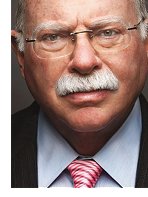- Looking for ways to get consistently good results
- Learning how to make money whether the market goes up or down
- Trading part-time as a serious hobby before you quit your day job
- Taking control of your financial future by growing your retirement funds effectively
- Implementing a strategy that protects against downside risk
- Never buying high and selling low again-----------------------

- Make all your mistakes early in life. He says the more tough lessons you learn early on, the fewer errors you make later. A common mistake of all young investors is to be too trusting with brokers, analysts, and newsletters who are trying to sell you bad stocks.
- Always make your living doing something you enjoy. This way, you devote your full intensity to it which is required for success over the long-term.
(asr: very true, why IT (what you enjoy) gives fuel to putup with 70 hour weeks which is required for success these days . -- 11/10/2011: asr: on a youtube video I watched Steve Job confirmed the same thing as key to 'success') - Be intellectually competitive. This involves doing constant research on subjects that make you money. The trick, he says, in plowing through such data is to be able to sense a major change coming in a situation before anyone else.
(asr: I only noticed MRCI OCT, NOV OIL patterns today 9/24/10 , bit late after 2 weeks of loss trades, these charts show Bearish trend 8/15 onwards in 5 year trend. it seems OIL is following 5 year trend, make sense .
AS this guy said I did not use my knowlege of this Seasonal chart before trading only doing after loss trades , I need to study these more at least have them handy UPLOAD to foresightis.com ...) - Make good decisions even with incomplete information. In the real world, he argues, investors never have all the data they need before they put their money at risk. You will never have all the information you need. What matters is what you do with the information you have. Do your homework and focus on the facts that matter most in any investing situation.
- Always trust your intuition. For him, intuition is more than just a hunch. He says intuition resembles a hidden supercomputer in the mind that you’re not even aware is there. It can help you do the right thing at the right time if you give it a chance. In fact, over time your own trading experience will help develop your intuition so that major pitfalls can be avoided.
- Don’t make small investments. You only have so much time and energy so when you put your money in play. So, if you’re going to put money at risk, make sure the reward is high enough to justify it.
"One dollar invested with me in 1967 would have been worth $481 on the day I closed the firm in 1995, versus $19 if it had been invested in a Standard & Poor's index fund."
"I always used fundamentals. But the fact is that often, the time frame of my investments was short-term."
"I do an enormous amount of trading, not necessarily just for profit, but also because it opens up other opportunities. I get a chance to smell a lot of things. Trading is a catalyst."
"Somehow, in a business [securities trading] so ephemeral, the notion of going home each day, for as many days as possible, having made a profit – that's what was so satisfying to me.
| Most Famous For: | Steinhardt Partners achieved a performance track record that still stands out on Wall Street: 24% compound average annual returns – more than double the S&P 500 – over a 28-year period. What's more amazing is that Steinhardt accomplished this record with stocks, bonds, long and short options, currencies and time horizons ranging from 30 minutes to 30 days. There were few investment instruments over which Michael Steinhardt did not wield some mastery. |
- Do not feel compelled to always have a trade on or to trade everyday. Capital preservation is the key to successful trading and sometimes that just means waiting when the odds are not in your favour. Throughout all my years of investing I've found that the big money was never made in the buying or the selling. The big money was made in the waiting." Jesse Livermore
- Develop your own proven trading system - accept that losing trades will be part of that system.
- Do not let fear and greed influence your trading decisions.


